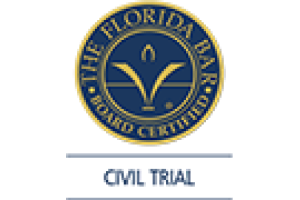Client Reviews
Unsafe Toys
For a child, there is perhaps no greater joy than a shiny new toy.
But parents and loved ones need to be especially careful when choosing which play products to purchase, particularly given the recent finding that a child is treated at a U.S. hospital emergency room every three minutes for a toy-related injury.
At Associates and Bruce L. Schiner, Attorneys for the Injured, our product liability attorneys in Fort Myers and Cape Coral recognize that children of different ages face different kinds of toy-related threats. The bottom line is any product made for children must be held to the highest standards of safety. When defects in design and manufacturing of a toy result in serious injury or death, parents and estate representatives may have a strong basis for filing a product liability lawsuit.
Some of the most common causes of toy-related injury include:
- Balloons causing airway obstruction, choking, aspiration and asphyxiation
- Tricycle fall-downs
- Stuffed toys/dolls/accessories/figures that cause suffocation, asphyxia, choking and drowning
- Plastic toy foods that cause choking
- Marbles that cause asphyxia and choking
- Sharp edges that lead to lacerations
- Small parts that lead to choking
- Rubber ball causing asphyxiation
- Lead paint that can cause long-term illness
The aforementioned research, conducted by the Center for Injury Research and Policy and published in the journal Clinical Pediatrics, analyzed consumer product injury statistics culled from the National Electronic Injury Surveillance Service. In looking at data from a 10-year period, study authors learned the toy-related injury rate rose 40 percent – mostly attributed to the rising popularity of foot-powered scooters (for which there was a serious injury every 11 minutes, beginning in 2000).
But defective toys were also a major problem. In just one year, researchers noted 30 million units of more than 100 different types of toys were recalled in the U.S. The problem is that oftentimes, people are not aware of product recalls. Return rates on recalls in general are notoriously low.
Some other notable findings:
- 80 percent of all toy-related injuries occurred at home.
- Toy-related injuries increased during summer months.
- More than half of the children injured were under age 6.
It’s worth noting the figures in the study are lowball estimates, considering they only factor in cases where children were taken to the hospital for treatment. It excludes cases in which children received emergency treatment in urgent care centers, doctors’ offices and those who did not seek care at all. Also, toy-related deaths were not included in the research.
The U.S. Consumer Product Safety Commission, meanwhile, does track toy-related injuries and deaths. In the latest report, it indicated there were a total of nine toy-related child deaths reported annually. They ranged in age from 8 months to 11 years. Six died from choking on small parts. One died from choking on a balloon. Two died in scooter and powered wheel-riding toy accidents.
The agency also estimated there were approximately 250,000 toy-related injuries for children of all ages in U.S. hospitals that year. Of those injuries, the most common included:
- Head and facial injuries (44 percent)
- Arm injuries (24 percent)
- Upper leg injuries (18 percent)
- Other (14 percent)
Some of the common types of injuries included:
- Concussions
- Internal injuries
- Dislocations
- Puncture injuries
- Lacerations
- Contusions and abrasions
- Strains and sprains
- Fractures
Not all injuries resulting from toy use are automatically indicative of a defective toy. However, it’s certainly worth exploring, particularly if the injury is severe or results in death.
As of June 2012, all new toys have to be made according to standards recently revised in ASTM F963-11. Almost all toys designed or intended primarily for children 12 and younger must undergo third-party testing, and most manufacturers, private labelers or importers have to issue a children’s product certificate, certifying in writing that the toy is in compliance with the mandatory standards.
Among some of the testing conducted on various child toy products:
- Rubber toys are tested for durability and hardness.
- Art materials must identify and label all potentially hazardous materials.
- Home playground equipment, children’s jewelry, toy chairs, scooters and play yards must all meet strict safety standards.
The specific regulations for toy testing are set by the CPSC.
While it is important for parents and caregivers to be educated about purchases and stay abreast of recalls, manufacturers hold a great deal of responsibility for ensuring child safety. Some of the recommendations included by safety advocates include:
- Advertising recalls on social media sites
- Re-evaluating product design and internal safety standards by surpassing the minimum federal safety standards
- Marketing toys with large, choke-free parts
- Packaging helmets with scooters and other riding toys
If you or a loved one has been injured in Southwest Florida, contact Associates and Bruce L. Scheiner, Attorneys for the Injured, for a free and confidential consultation to discuss your rights. There are no fees or costs unless we win. Offices in Fort Myers, Cape Coral, Naples and Port Charlotte.
Call 800-646-1210 for a Free Consultation.












